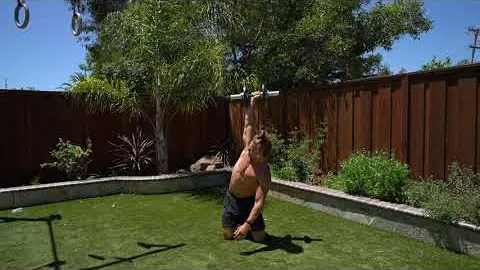
Welcome to our comprehensive guide on the Tall Kneeling Dumbbell Windmill exercise! In this article, we will delve into the details of this highly effective exercise, discussing its benefits, proper technique, and variations. Whether you are an experienced fitness enthusiast or just starting your fitness journey, incorporating the Tall Kneeling Dumbbell Windmill into your routine can bring about significant improvements in your core strength, flexibility, and overall fitness level.
Core Strength: The Tall Kneeling Dumbbell Windmill primarily targets the muscles of your core, including the rectus abdominis, obliques, and transverse abdominis. By performing this exercise regularly, you can develop a strong and stable core, which is crucial for maintaining proper posture and preventing lower back pain.
Shoulder Stability: The Tall Kneeling Dumbbell Windmill also activates the muscles responsible for shoulder stability, such as the deltoids, rotator cuff muscles, and serratus anterior. These muscles play a vital role in maintaining proper shoulder mechanics, reducing the risk of injuries during daily activities and sports.
Flexibility and Mobility: This exercise requires significant flexibility and mobility in your hips, hamstrings, and shoulders. Regularly performing the Tall Kneeling Dumbbell Windmill can help improve your flexibility in these areas, allowing for better range of motion and enhancing your overall athletic performance.
To perform the Tall Kneeling Dumbbell Windmill correctly, follow these step-by-step instructions:
Start by kneeling on a mat or soft surface, with your knees and hips flexed to 90 degrees. Ensure your spine is in a neutral position, with your core engaged.
Hold a dumbbell in your right hand and extend your right arm directly above your shoulder, keeping your palm facing inward.
Begin the movement by slightly hinging at your hips, pushing them to the left side.
In a controlled manner, lower the dumbbell towards your left foot while maintaining a straight arm and keeping your eyes on the weight.
As you reach the lowest point of the movement, engage your core and return to the starting position, pressing through your right foot.
Repeat the exercise for the desired number of repetitions, then switch sides and repeat with the dumbbell in your left hand.
Once you have mastered the basic Tall Kneeling Dumbbell Windmill, consider incorporating these variations into your workout routine to keep challenging your muscles and preventing plateaus:
Weight Variation: Increase or decrease the weight of the dumbbell to add or reduce intensity, respectively. Start with a weight that allows you to maintain proper form and gradually increase it as you become stronger.
Kettlebell Windmill: Instead of using a dumbbell, substitute it with a kettlebell. The offset weight distribution of a kettlebell adds an additional challenge to your core and shoulder stability.
Unilateral Windmill: Perform the exercise while standing on one leg instead of in a kneeling position. This variation further enhances the stability and strength of your core and lower body.
The Tall Kneeling Dumbbell Windmill is an effective and versatile exercise that targets your core, enhances shoulder stability, and improves overall flexibility. By incorporating this exercise into your fitness routine, you can reap numerous benefits, including improved posture, reduced risk of injuries, and increased athletic performance. Remember to start with proper technique, gradually progress, and consider adding variations to keep your workouts engaging and challenging. Include the Tall Kneeling Dumbbell Windmill in your fitness regimen and take your strength and flexibility to new heights!
If you're looking for a gym, fitness club or yoga studio, you've come to the right place.
You can find information about gyms in your area. Browse catalog of gyms and find gyms with classes which are you looking for.
On gym page you can find simple information like address, phone or website. You can find list of available classes. You can check availability of personal training or small group classes. On place page you can also see information about open hours.
You can find gyms near you with amenities, courts, studios and equipments.
Use our map to find gym at your city or district.
In Gym Navigator you can find list of exercises with movies for many body parts.
You can browse exercises catalog and find exercises the best of you.
You can also find exercises grouped into workout plans, which you can use to improve you body. Each routine show you exercises one by one and give you possibility to count you progress and count down rest time.